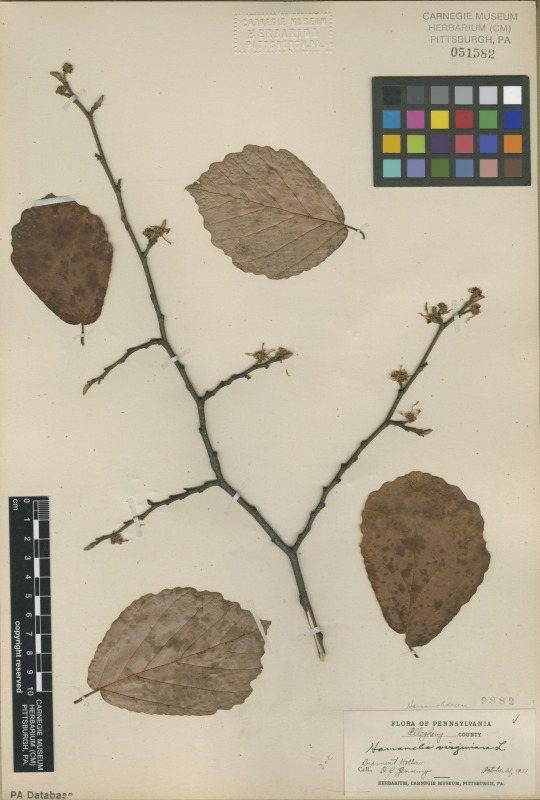
Collected on a spooky Halloween night in 1931 (well, it might have been during the day, but let’s just say night), this specimen was found by Curator of Botany Otto Jennings at Dixmont Hollow near Emsworth, Pennsylvania.
Witch hazel (Hamamelis virginiana) is a small deciduous tree found in forests and stream banks across the eastern United
States. This awesome native plant is notable for its fall flowering, with long ribbon-shaped bright yellow petals. The plant flowers as it drops its leaves for fall, leaving branches with no leaves but plentiful flowers. Witch hazel is among the last plants in our region to flower in the fall. As its fruit dry, it ejects the seeds, making a snapping sound.
Why the name witch hazel? Several explanations have been given. One is derivation from an old English word meaning bendable. More fitting for Halloween, another unverified claim is the plant was thought to be linked to witchcraft, both for its mysterious noises—snapping sounds during seed ejection—and supposed use in magic wands.
Botanists at Carnegie Museum of Natural History share pieces of the herbarium’s historical hidden collection on the dates they were
discovered or collected. Check back for more!
